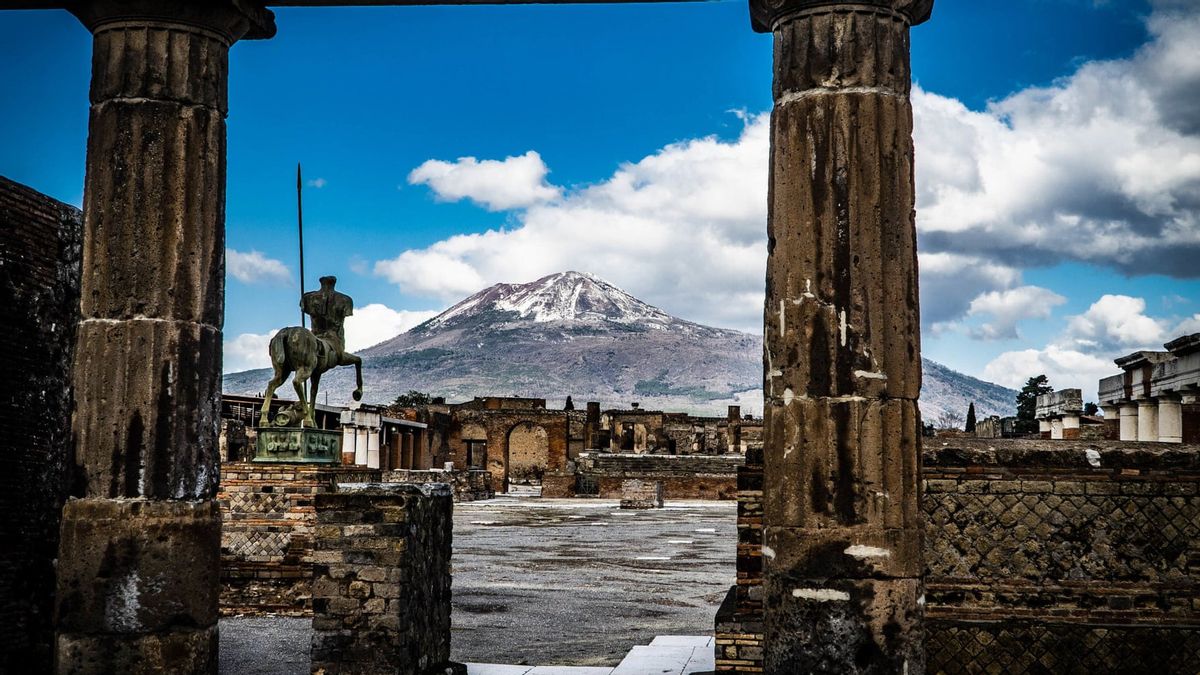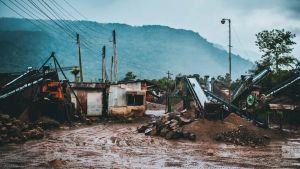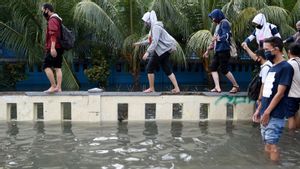JAKARTA - The explosion of Mount Vesuvius in ancient Roman times around AD 79, is still widely discussed and researched by scientists. Recent study results reveal surprising facts.
According to the researchers, at least 2 thousand people died in the city of Pompeii, as a result of not being able to escape from the giant cloud of ash and gas exhaled by the volcanic explosion.
Instead of lava, the townspeople could not escape due to asphyxiation due to the thick ash, covering the entire city of Pompeii and killing 2,000 inhabitants in just 15 minutes.
This is based on a study conducted by joint researchers from the University of Bari's Department of Earth and Geo-environmental Sciences, in collaboration with the National Institute of Geophysics and Volcanology (INGV) and the UK Geological Survey in Edinburgh.
"This study aims to develop a model to try to understand and measure the impact of pyroclastic flows leading to Pompeii, which is about 10 kilometers from Vesivius," explained Roberto Isaia, a senior researcher from the Vesuvius Observatory at INGV, as reported by The Guardian.
From the research conducted, the team managed to measure the duration of the pyroclastic flow, solid flow of solid lava, volcanic particles and hot gases that hit the city of Pompeii a few minutes after the volcano erupted.
"Deadly clouds have temperatures of more than 100 degrees and consist of CO2, chloride, incandescent ash particles and volcanic flakes," said Isaia.
The study concluded that these conditions made residents unable to escape, so most of them died from suffocation, unable to breathe, due to gas, ash and volcanic particles that covered the city for 10-20 minutes.
Isaia said, dozens of people may have died as a result of the bursts of gravel from a volcanic eruption or Lapili. However, most died due to shortness of breath due to pyroclastic flow.
Pyroclastic flows have been described as the most destructive of explosive lutsan effects. Volcanic dust resulting from the eruption, flows along the slopes of the volcano at speeds of up to hundreds of kilometers per hour, high temperatures and dense concentrations of particles.
“The 15 minutes in that cloud of hell is definitely endless. The inhabitants couldn't imagine what was going on. The Pompeii people lived with earthquakes, but not eruptions, so they were startled and swept away by the ash cloud, "he explained.
Through this research, scientists reveal information on the potential dangers of pyroclastic flows, as well as provide new explanations for the eruption of Mount Vesuvius which buried Pompeii and its people and life in ancient Rome.
"It is very important to be able to reconstruct what happened during the eruptions of Vesuvius in the past. Starting from the geological record, to tracking the characteristics of pyroclastic flows and their impact on the population," explained Prof. Pierfrancesco Dellino of the University of Bari.
To note, the Ancient City of Pompeii, located in this region of Naples, is one of Italy's top tourist attractions and a UNESCO World Heritage site. Most of the ancient Greek and Roman cities are still covered in rubble, when Mount Vesuvius erupted and blanketed the city with ash and pumice nearly 2,000 years ago.
The English, Chinese, Japanese, Arabic, and French versions are automatically generated by the AI. So there may still be inaccuracies in translating, please always see Indonesian as our main language. (system supported by DigitalSiber.id)













